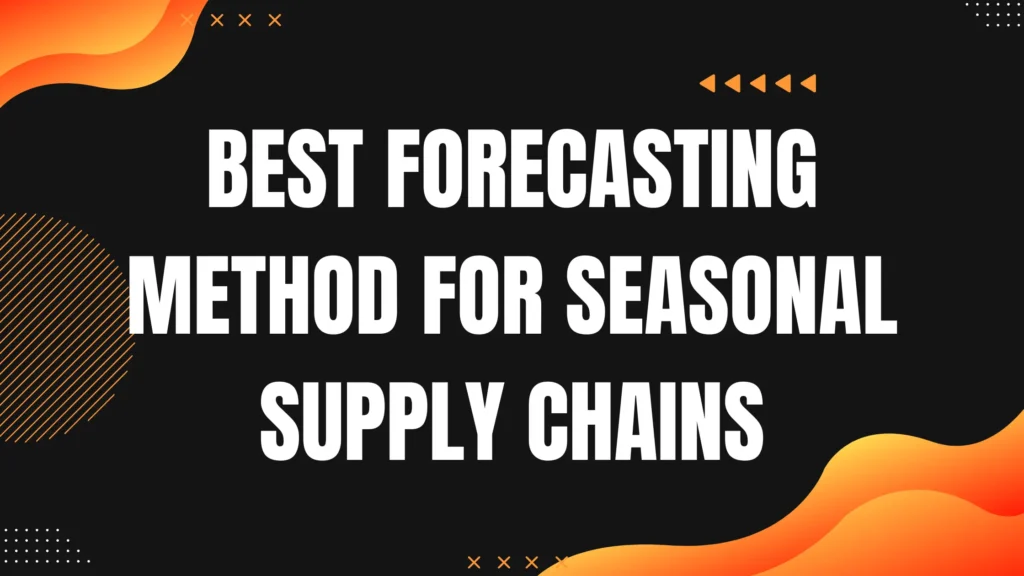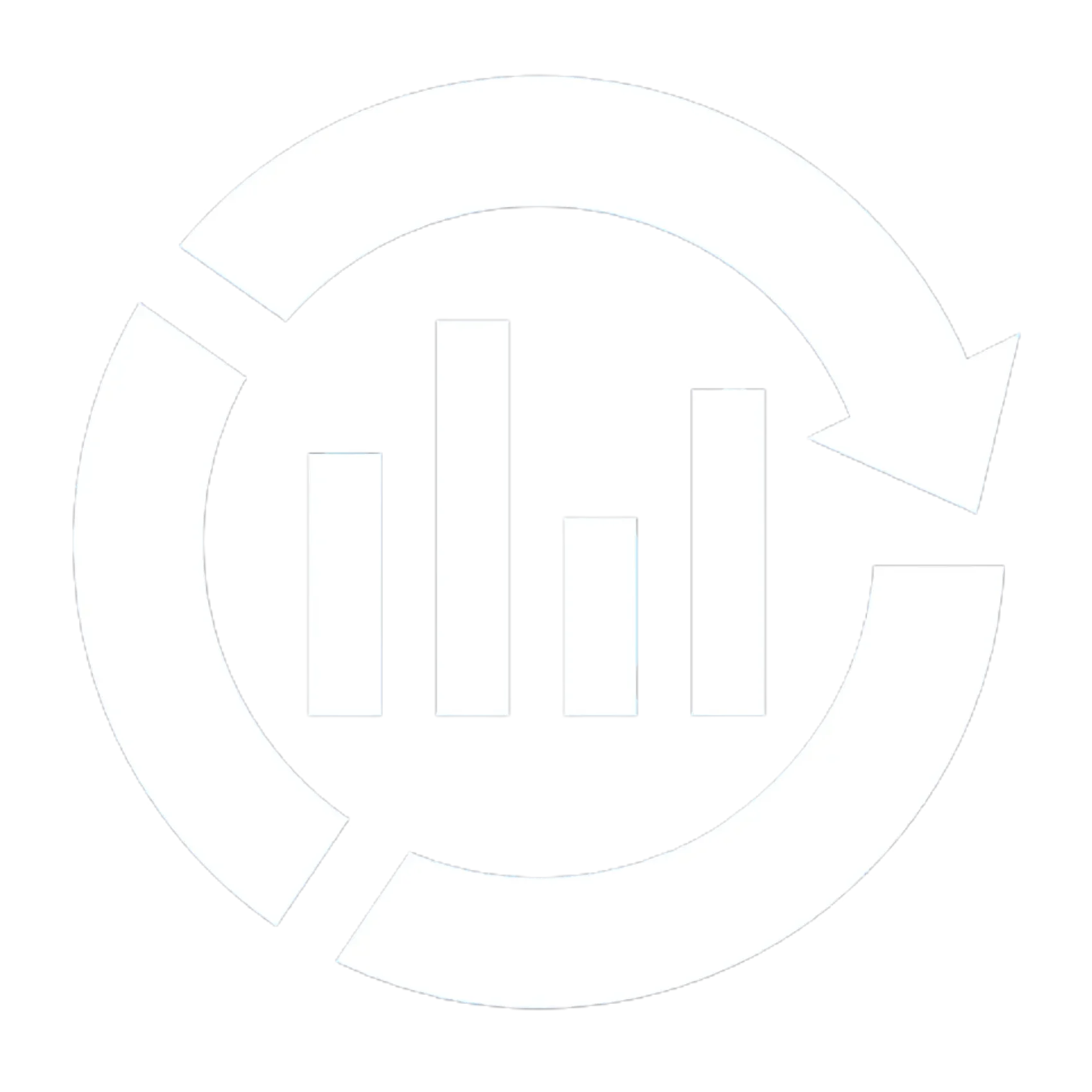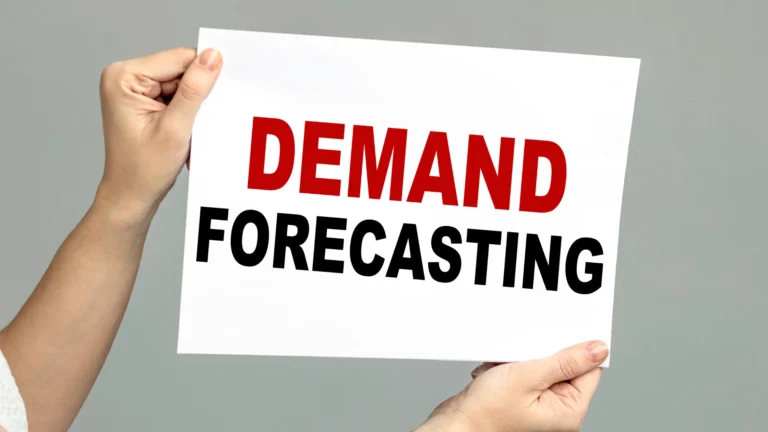Struggling to find the best forecasting method for seasonal supply chains? You’re not alone. Seasonal demand — whether it’s holiday shopping surges, summer beverage sales, or winter apparel — can disrupt even the most efficient operations. Forecast too low, and you risk stockouts and unhappy customers. Forecast too high, and excess inventory ties up capital and eats into profits. The key is choosing a forecasting method that not only smooths out random fluctuations but also anticipates those recurring peaks and dips. In this guide, we’ll compare the most widely used forecasting approaches in supply chain analytics and reveal which ones work best when seasonality takes center stage.

So, which forecasting method works best when seasonality rules the game? Let’s break it down.
Common Forecasting Methods — And Their Fit for Seasonality
When demand swings up and down with the seasons, the forecasting method you use can either keep your supply chain steady or throw it completely off balance. Some approaches are simple and quick to set up, while others dig deep into patterns, cycles, and even external drivers like weather or promotions. Let’s break down the most common forecasting methods and see how well they hold up when seasonality is in play.
1. Naïve Forecasting
How it works:
Naïve forecasting is the most straightforward forecasting approach. It assumes that tomorrow’s demand will be exactly the same as today’s (or that the next period will simply mirror the most recent period). In practice, this means if you sold 500 units today, you’ll forecast 500 units for tomorrow — no adjustments, no trend analysis, no seasonality accounted for.
There are slight variations of the naïve method:
- Day-to-day naïve: Tomorrow equals today.
- Same-period naïve: Next December equals last December (a seasonal twist of naïve).
- Cumulative naïve: This week equals last week’s demand.
But the core principle is the same: it copies the most recent observation forward.
Pros:
The main strength of this method is its simplicity. It requires no data crunching, no software, and no expertise, making it cost-free and quick to implement. It can also serve as a useful baseline forecast to compare against more advanced methods.
Cons:
Naïve forecasting completely ignores recurring seasonal patterns, demand trends, and external events. It performs poorly when demand fluctuates with cycles like holidays, weather, or festivals. The result can be costly understocking during peaks or overstocking during off-seasons.
Retail (Christmas Toys)
A toy retailer sells around 1,000 units per day in November, but demand jumps to 5,000 units per day in December due to Christmas. A naïve forecast would still predict 1,000 units for December, leading to severe understocking and missed sales.
Verdict:
Naïve forecasting works only for products with steady, non-seasonal demand, such as basic household staples. For highly seasonal products, it is unreliable and can be damaging to both revenue and customer satisfaction. At best, it should be used as a benchmark against which more advanced forecasting methods can be evaluated.
2. Moving Average (MA)
How it works:
The moving average method smooths out short-term fluctuations by averaging demand over a fixed number of past periods. For instance, with a three-month moving average, the forecast for April would be the average of sales from January, February, and March. This helps filter out random noise and gives a clearer sense of the underlying demand pattern.
Pros:
It’s simple, easy to explain, and works well for products with steady demand. By evening out sudden highs and lows, it helps managers avoid overreacting to short-term spikes.
Cons:
Because it averages past periods, it lags behind real changes in demand. Most importantly, it does not account for seasonal swings. Peaks and troughs get smoothed away, which means under-forecasting during high-demand months and over-forecasting in the off-season.
Example:
An ice cream brand sells 200 units per day in winter and 800 per day in summer. A three-month moving average across spring would predict around 400 units going into summer, which leaves the company drastically underprepared when demand actually surges.
Verdict:
Moving averages are fine for smoothing noise in non-seasonal products, but they fall short when demand is seasonal. They should only be used as a rough guide, not a primary method, in supply chains with strong seasonal patterns.
3. Weighted Moving Average (WMA)
How it works:
The weighted moving average is similar to a simple moving average, but instead of treating all past periods equally, it assigns more weight to recent demand. For example, in a three-month window, you might give March 50%, February 30%, and January 20%. This way, the forecast responds more quickly to recent shifts in demand.
Pros:
More flexible than a simple moving average because it prioritizes the most recent data. This makes it better at adjusting when demand trends are changing. It’s still relatively easy to implement and understand.
Cons:
Even with weighting, it doesn’t truly capture seasonal cycles. If demand always spikes during certain months, WMA only reacts after the spike happens, rather than anticipating it. Choosing the “right” weights is also subjective and may not reflect real patterns.
Example:
A fashion retailer sells 300 t-shirts per month in spring, but sales climb to 900 in June as summer begins. A weighted moving average based on the prior three months might put more emphasis on May’s increase, but it would still forecast something like 500–600 units for June — falling short of the true seasonal demand of 900.
Verdict:
Weighted moving averages are a step up from simple averages and work well in situations where demand shifts gradually. But for highly seasonal supply chains, they remain reactive rather than predictive. They help smooth data, but they won’t save you from stockouts in peak months or excess stock in the off-season.
4. Exponential Smoothing (ES)
How it works:
Exponential smoothing builds on the idea of moving averages but gives exponentially more weight to recent demand data. This makes the forecast highly responsive to the latest changes while still accounting for older data in a diminishing way. The method is controlled by a smoothing constant (alpha), which decides how much emphasis is placed on the most recent period.
Pros:
It’s simple to apply, reacts faster to demand shifts than moving averages, and is more mathematically elegant. Many businesses use it because it strikes a balance between responsiveness and stability.
Cons:
Basic exponential smoothing only looks at recent demand levels — it doesn’t handle seasonality on its own. If your demand consistently spikes in December or dips in summer, this method won’t anticipate it. You’d need advanced versions (like Holt-Winters) to capture seasonal cycles.
Example:
A soft drink company sees sales steadily rising in spring before a summer peak. Exponential smoothing will adjust forecasts upward as recent sales increase, but it won’t fully predict the sharp seasonal jump that comes every summer.
Verdict:
Exponential smoothing is stronger than simple or weighted moving averages, but in seasonal supply chains it needs to be upgraded to Holt-Winters to truly be effective. On its own, it’s not enough to handle strong seasonal swings.
5. Holt-Winters Exponential Smoothing
How it works:
Holt-Winters is an advanced form of exponential smoothing that accounts for three components: level (current demand), trend (the overall direction demand is moving), and seasonality (recurring patterns). By layering these together, it can predict both gradual growth and recurring peaks or dips. There are two versions: additive (when seasonal changes are roughly constant in size) and multiplicative (when seasonal changes grow or shrink with demand).
Pros:
This method directly captures seasonality, making it a reliable choice for supply chains with predictable cycles such as holiday demand or quarterly surges. It’s relatively easy to apply with modern tools and provides accurate short- to medium-term forecasts when historical data is available.
Cons:
It relies heavily on consistent historical patterns. If seasonality shifts due to new trends, unpredictable events, or sudden promotions, the model can lose accuracy. It also requires more effort than simpler methods in terms of parameter tuning.
Example:
A retailer selling winter jackets sees sales rise every November, peak in December, and taper off by February. Holt-Winters learns this recurring pattern from past data and can forecast the next winter’s demand with far more accuracy than a moving average or simple exponential smoothing.
Verdict:
For highly seasonal supply chains with stable, repeating patterns, Holt-Winters is one of the best practical choices. It’s powerful without being overly complex, making it a go-to method for companies dealing with seasonal cycles year after year.
6. ARIMA / SARIMA
How it works:
ARIMA (Auto-Regressive Integrated Moving Average) is a statistical model that predicts future demand based on past values and the relationships between them. It looks at three things: how demand depends on its own past (auto-regression), how past trends need to be “differenced” to make the data stable (integration), and how moving averages of past errors affect predictions. The seasonal version, SARIMA, adds seasonal components on top of this, making it capable of handling recurring cycles in demand.
Pros:
Very powerful and flexible. With SARIMA, you can model complex seasonal patterns, not just simple up-and-down cycles. It works well when historical data is strong and seasonality is clear. It’s a favorite in industries where data science teams are available to fine-tune models.
Cons:
It requires expertise to set up and interpret correctly. Parameters can be tricky to select, and the model needs clean, reliable data. If your seasonality is unpredictable (like driven by sudden promotions or global events), it can still struggle.
Example:
An airline sees predictable spikes in ticket demand every summer and winter holiday season. Using SARIMA, analysts can model both the yearly seasonal cycle and shorter holiday bursts, producing forecasts that align much closer with reality than simple smoothing methods.
Verdict:
ARIMA is a strong method for stable demand patterns, but SARIMA is the real winner for seasonal supply chains. If you have good data and the right expertise, it’s one of the most accurate forecasting tools for industries with complex or layered seasonality.
7. Causal Models (Regression, Machine Learning, AI)
How it works:
Causal models go beyond historical demand by factoring in external variables that drive seasonality. These could include weather, holidays, promotions, marketing campaigns, or even social trends. Regression models quantify how these factors impact demand, while machine learning and AI can uncover complex, non-linear relationships that humans might miss.
Pros:
Extremely powerful when seasonality is influenced by outside factors. For example, an AI model can combine weather forecasts, holiday calendars, and promotional schedules to predict demand surges weeks in advance. These models adapt quickly and can improve accuracy as more data flows in.
Cons:
They require high-quality data from multiple sources, not just sales history. Setting up machine learning or AI systems also demands strong analytical capability, computing power, and ongoing monitoring. For smaller businesses, this can be resource-intensive.
Example:
A soft drink company sees sales skyrocket during hot summer days but dip when rain hits. By feeding temperature and rainfall data into a regression or machine learning model, the company can forecast daily demand far more accurately than by relying on past sales alone.
Verdict:
Causal and AI-driven models are the most advanced option for highly seasonal supply chains. They’re especially useful when external factors like weather or events heavily influence demand. While resource-heavy, they deliver the precision that complex, volatile markets demand.
Comparison of Forecasting Methods for Seasonal Supply Chains
Here’s a side-by-side view to help you see how each method stacks up:
| Method | Handles Seasonality? | Complexity Level | Data Needs | Best Use Case | Limitations |
|---|---|---|---|---|---|
| Naïve Forecasting | ❌ No | Very Low | Minimal | Stable, non-seasonal demand | Fails in seasonal peaks, too simplistic |
| Moving Average (MA) | ⚠️ Weak | Low | Short history | Products with mild cycles | Smooths away peaks, lags behind demand |
| Weighted MA (WMA) | ⚠️ Weak | Low–Medium | Short history + weights | Demand with gradual shifts | Still reactive, not predictive |
| Exponential Smoothing (ES) | ⚠️ Limited | Medium | Historical demand | Products with trend but weak seasonality | Needs Holt-Winters upgrade for cycles |
| Holt-Winters ES | ✅ Strong | Medium | Reliable historical cycles | Retail, fashion, FMCG with regular seasonality | Less accurate if cycles change unpredictably |
| ARIMA | ⚠️ Moderate | High | Clean historical demand | Industries with stable trends | Weak without SARIMA |
| SARIMA | ✅ Strong | High | Strong, structured data | Airlines, retail, food with layered seasonality | Requires data expertise |
| Causal / ML / AI Models | ✅ Very Strong | Very High | Sales + external drivers (weather, holidays, promotions) | Complex, volatile markets | Resource-heavy, needs advanced capability |
Conclusion
In highly seasonal supply chains, the forecasting method you choose can make or break your ability to meet demand profitably. Simpler methods like naïve forecasting and moving averages may work as baselines or for products with steady demand, but they quickly fall apart when faced with sharp seasonal swings.
For companies looking for a practical, reliable solution, Holt-Winters Exponential Smoothing strikes the best balance between ease of use and seasonal accuracy. It works well when historical cycles are stable and predictable.
For more data-mature organizations, SARIMA offers even greater accuracy by explicitly modeling seasonality, while causal and AI-driven models represent the cutting edge — capturing the real-world drivers of seasonal demand such as weather, festivals, and promotions.
Ultimately, the “best” method isn’t one-size-fits-all. It depends on your data maturity, resources, and how predictable your seasonal cycles are. The key is to move beyond basic methods and invest in forecasting approaches that don’t just react to demand, but anticipate it before it arrives. That’s how seasonal supply chains stay ahead of the curve.
Related News: Just in time? Manufacturers turn to AI to weather tariff storm
Frequently Asked Questions (FAQ)
The best method depends on data maturity. For most businesses, Holt-Winters Exponential Smoothing is the most practical choice because it directly accounts for seasonality. For more advanced setups, SARIMA or AI-driven models offer the highest accuracy.
Moving averages can smooth out short-term fluctuations, but they fail to capture recurring seasonal peaks and dips. They may work as a rough guide, but they aren’t reliable for products with strong seasonal demand.
At least two to three full seasonal cycles (e.g., two to three years of monthly data) are recommended for methods like Holt-Winters or SARIMA. More data improves accuracy, especially when patterns are complex.
Yes — AI and ML models can factor in external drivers like weather, holidays, or promotions that traditional methods ignore. This makes them more accurate for volatile or highly seasonal supply chains, but they require high-quality data and advanced expertise.
Industries like retail, fashion, food & beverages, agriculture, travel, and airlines rely heavily on seasonal forecasting. In these sectors, aligning supply with predictable peaks (holidays, weather changes, festivals) can make or break profitability.






